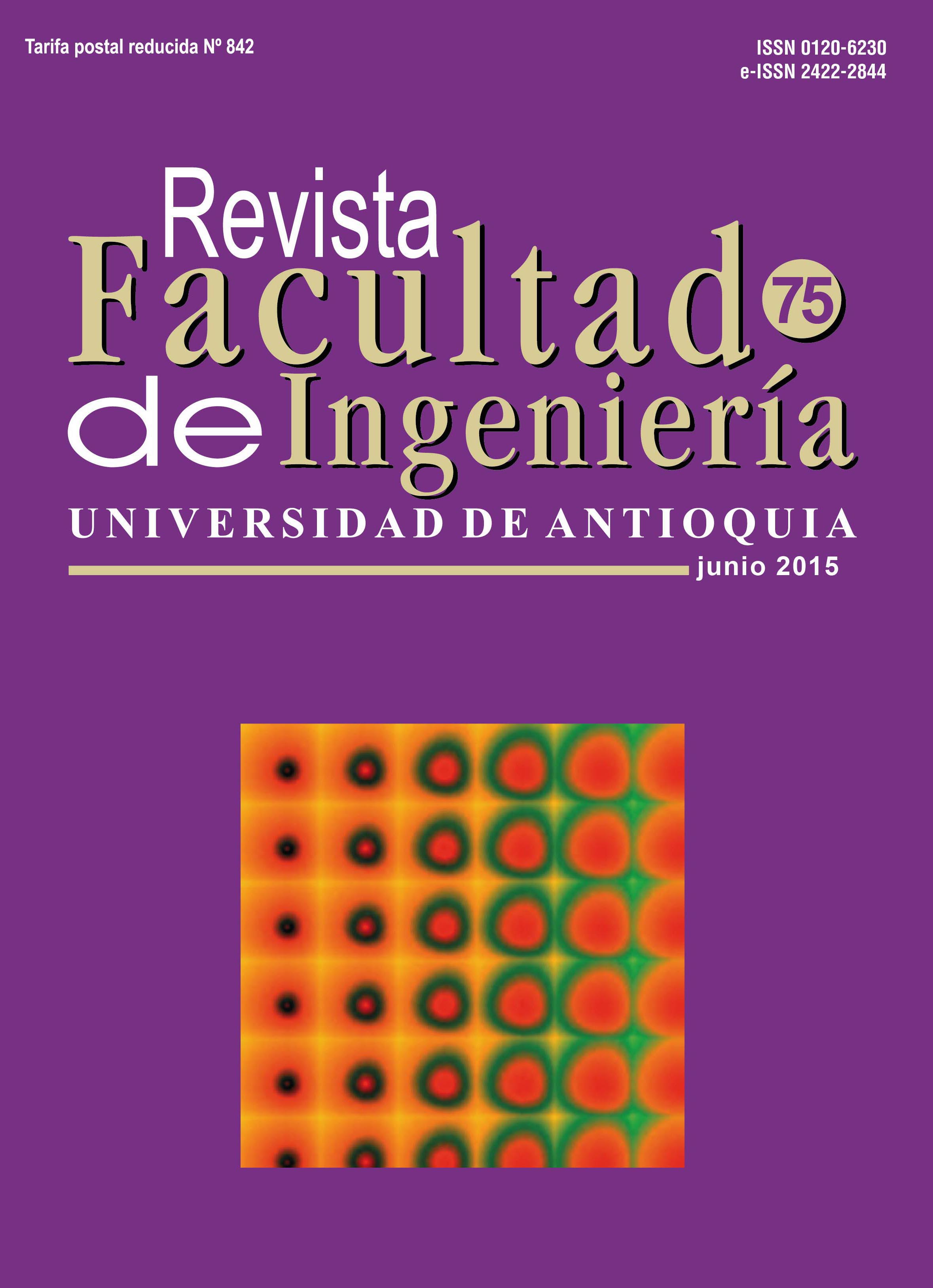Reconfiguration of photovoltaic arrays based on genetic algorithm
DOI:
https://doi.org/10.17533/udea.redin.n75a10Keywords:
genetic algorithm, online optimization, reconfiguration of PV systemsAbstract
This paper describes a Genetic Algorithm (GA) implementation devoted to the calculation of reconfiguration patterns for Photovoltaic Arrays (PVs). The proposed solution is compared to the classical Brute Force (BF) approach, whose use is very restrictive, because of its quite poor performance. The GA tuning up process is briefly described, and several cases of study, including partial shading profiles for the PV array, are presented. Results show a very superior performance of the GA, when compared to the BF approach. Improvements in output power, as a result of the calculated reconfiguration, are also shown.
Downloads
References
J. Bastidas, E. Franco, G. Petrone, C. Ramos, G. Spagnuolo. “A model of photovoltaic fields in mismatching conditions featuring an improved calculation speed”. Electric Power System Research. Vol. 96. 2013. pp. 81-90.
J. Bastidas, C. Ramos, A. Saavedra. “Reconfiguration analysis of photovoltaic arrays based on parameters estimation”. Simulation Modelling Practice and Theory. Vol. 35. 2013. pp. 50-68.
N. Femia, M. Fortunato, M. Vitelli. “Light-to-light: PV-Fed LED lighting systems”. IEEE Transactions on power electronics . Vol. 28. 2013. pp. 4063-4073.
D. Jacobs, N. Marzolf, J. Paredes, W. Rickerson, H. Flynn, C. Becker, M. Solazo. “Analysis of renewable energy incentives in the Latin America and Caribbean region: The feed-in tariff case”. Energy Policy . Vol. 60. 2013. pp. 601-610.
E. Romero, G. Spagnuolo, L. Garcia, C. Ramos, T. Suntio, W. Xiao. “Grid-Connected Photovoltaic Generation Plants: Components and Operation”. IEEE Industrial Electronics Magazine . Vol. 7. 2013. pp. 6-20.
Y. Zhao, L. Yang, B. Lehman. Reconfigurable solar photovoltaic battery charger using a switch matrix . Proceedings of the IEEE 34 th International Telecommunications Energy Conference (INTELEC). Scottsdale, USA. 2012. pp. 1-7.
D. Nguyen, B. Lehman. “An adaptive solar photovoltaic array using model-based reconfiguration algorithm”. IEEE Transactions on Industrial Electronics . Vol. 55. 2088. pp. 2644-2654.
M. El-Dein, M. Kazerani, M. Salama. “Optimal photovoltaic array reconfiguration to reduce partial shading losses”. IEEE Transactions on Sustainable Energy . Vol. 4. 2013. pp. 145-153.
J. Accarino, G. Petrone, C. Ramos, G. Spagnuolo. Symbolic algebra for the calculation of the series and parallel resistances in PV module model . Proceedings of the International Conference on Clean Electrical Power (ICCEP). Alghero, Italy. 2013. pp. 62-66.
G. Velasco, F. Guinjoan, R. Pique, M. Roman, A. Conesa. “Electrical PV array reconfiguration strategy for energy extraction improvement in grid-connected PV systems”. IEEE Transactions on Industrial Electronics . Vol. 56. 2009. pp. 4319-4331.
J. Storey, P. Wilson, D. Bagnall. “The optimized-string dynamic photovoltaic array”. IEEE Transactions on Power Electronics . Vol. 29. 2014. pp. 1768-1776.
G. Petrone, C. Ramos. “Modeling of photovoltaic fields in mismatched conditions for energy yield evaluations”. Electric Power Systems Research . Vol. 81. 2011. pp. 1003-1013.
G. Petrone, G. Spagnuolo, M. Vitelli. “Analytical model of mismatched photovoltaic fields by means of Lambert W-function”. Sol. Energy Mater. Sol. Cells. Vol. 91. 2007. pp. 1652-1657.
S. Odenwald. Ask the Space Scientist about: Earth - Rotation. NASA/Raytheon. Available on: http://image.gsfc.nasa.gov/poetry/ask/arot.html Accessed: December 15, 2014.
R. Haupt, S. Haupt. Practical Genetic Algorithms . 2 nd ed. 2. Ed. Jhon Wiley & Sons, Inc. New York, USA. 1998. pp. 27-65.
Downloads
Published
How to Cite
Issue
Section
License
Copyright (c) 2015 Revista Facultad de Ingeniería Universidad de Antioquia

This work is licensed under a Creative Commons Attribution-NonCommercial-ShareAlike 4.0 International License.
Revista Facultad de Ingeniería, Universidad de Antioquia is licensed under the Creative Commons Attribution BY-NC-SA 4.0 license. https://creativecommons.org/licenses/by-nc-sa/4.0/deed.en
You are free to:
Share — copy and redistribute the material in any medium or format
Adapt — remix, transform, and build upon the material
Under the following terms:
Attribution — You must give appropriate credit, provide a link to the license, and indicate if changes were made. You may do so in any reasonable manner, but not in any way that suggests the licensor endorses you or your use.
NonCommercial — You may not use the material for commercial purposes.
ShareAlike — If you remix, transform, or build upon the material, you must distribute your contributions under the same license as the original.
The material published in the journal can be distributed, copied and exhibited by third parties if the respective credits are given to the journal. No commercial benefit can be obtained and derivative works must be under the same license terms as the original work.










 Twitter
Twitter